Chapter 11 EMA Instruments Catalogue
For conducting EMA studies, a variety of apps, online applications and wearable devices are on the market. In this chapter, we list a selection of instruments that we found to be in use in scientific studies within the APH consortium.
| Name | Manufacturer | Description |
|---|---|---|
| EMA APPS | ||
| Ilumivu | Ilumivu | Android / iOS EMA app |
| Moodbuster | ICT4D Consortium | Android EMA app |
| Movisens | MoviSens | Android EMA app |
| PsyMate | PsyMate | Android/iOS EMA app |
| RoQua | RoQua | SMS / Browser-based active EMA |
| Wearables | ||
| GENEActiv | Activinsights | Wrist-worn accelerometer |
| VU-AMS | VU | Wearable for autonomic nervous system assessments |
11.1 EMA Platforms & Apps
11.1.1 Ilumivu
Ilumivu (https://ilumivu.com/) is an American commercial company specialised in mobile EMA application development. It offers a cross-platform (Android and IOS) smartphone app (mEMA) that researchers can use to collect data from study participants.
Researchers can define the assessment plan of their study in an online back-office. The Ilumivu EMA toolbox library includes a rather complete set of survey elements, survey logic branching tools, and survey scheduling options. Passive EMA options include GPS tagging (of survey responses), Geo-fencing (triggering surveys at specific locations) and smartphone sensor logging (light and noise level, screen brightness, screen locked/unlocked, humidity, ambient temperature, barometric pressure, phone/SMS activity log, and basic device information). With the online back-office, researchers can invite participants, monitor study compliance and download data (in common data formats such as CSV).
A limited number of smart watch devices can optionally be linked to the Ilumivu app for further passive data collection. The company is open for custom development, when studies require features that are not included in the default app.
Current (July 2018) subscription plans range from 3.375 dollar (basic features) to 12.000 dollar (all features), per year. Researchers, who are interested in purchasing a license of the service, are advised to consult the ‘Grant Writer’s Guide’ of Ilumivu (at https://ilumivu.com/pricing/writing-a-grant/). Ilumivu’s competitive advantage is that it has multi-platform support. It is, however, not the cheapest EMA product on the market. Being an American company, researchers should also consider EU regulations relating to personal data privacy protection, since regulations are stricter when personal data of EU citizens leave the EU.
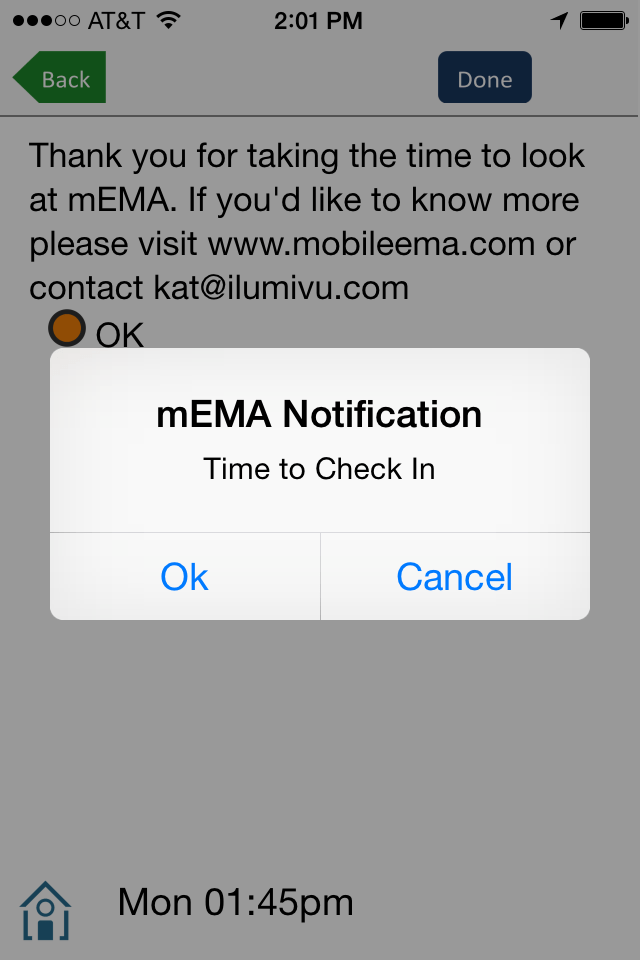
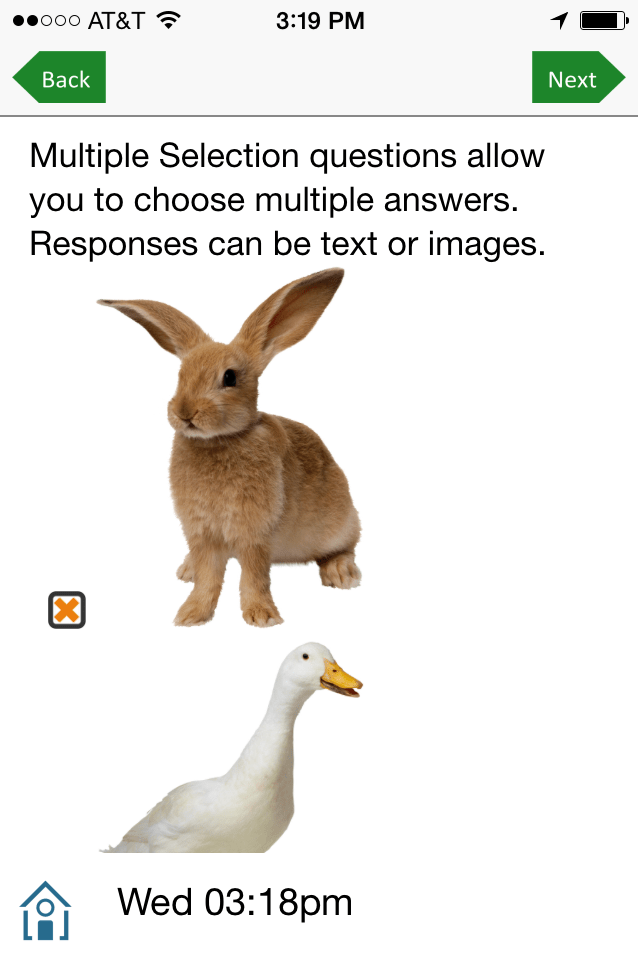
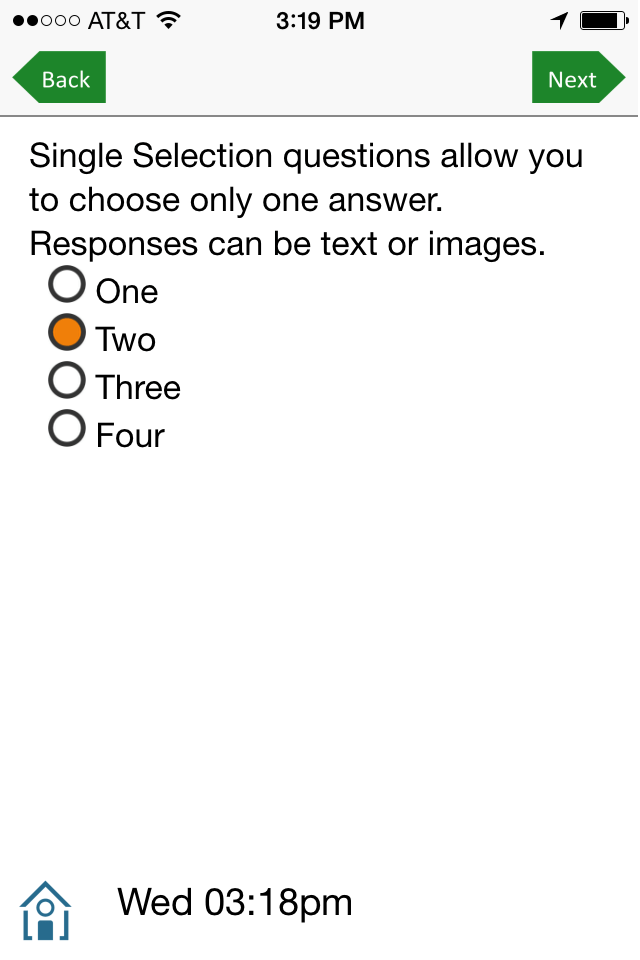
Figure 11.1: Ilumivu App Screenshots
11.1.2 Moodbuster
Moodbuster (http://moodbuster.eu/) is a web-based treatment platform with an integrated EMA app. The platform was developed by an international non-profit research consortium, including VU and GGZ inGeest, in two major EU-funded research projects: ICT4Depression (see ICT4Depression.eu; Warmerdam et al., 2012) and E-COMPARED (see http://e-compared.eu; Kleiboer et al., 2016; Van de Ven et al., 2017).
In the E-COMPARED trial, Moodbuster was used, in five EU-countries, to test blended treatment of major depression. In this study, participants used the smartphone app to rate mood and various other depression-related variables, in the context of their treatment, over a period of up to 20 weeks.
E-COMPARED EMA data were used in several predictive machine learning studies (Mikus et al., 2018; Rocha et al., 2018). In addition, the EMA app was used in a satellite study designed to assess reactivity in long-term EMA (Van Ballegooijen et al., 2016). Moodbuster will also be used in the EU ImpleMentAll project (http://www.implementall.eu) and in several other clinical trials that are in preparation. Currently, EMA assessment protocols are hard-coded in the Moodbuster app. New EMA assessments protocols can be implemented in collaboration with the Moodbuster development team. An online back-office is in development. Previous studies used an Android version of the EMA app. Cross-platform versions of the app are in development (The expected launch date of MoodBuster 2.0 is December 2018).
More information on Moodbuster can be obtained from prof. dr. Heleen Riper (h.riper@vu.nl).
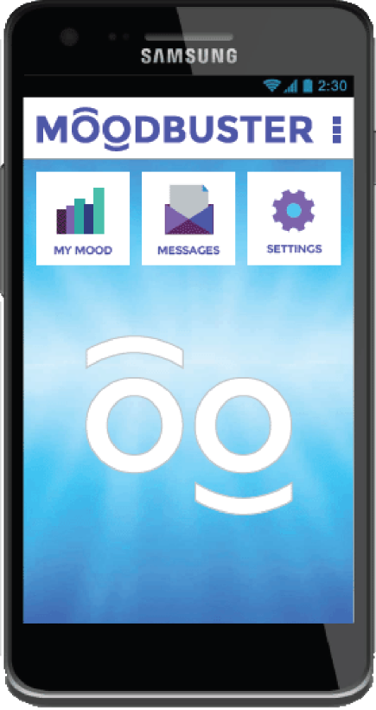
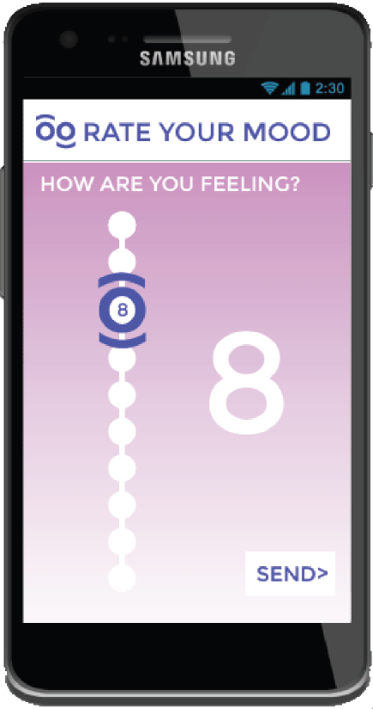
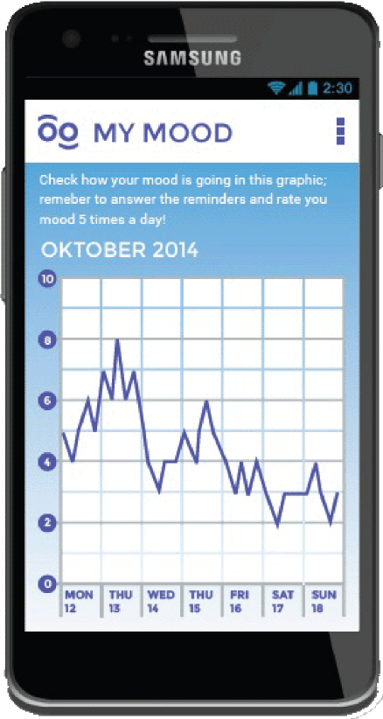
Figure 11.2: MoodBuster App Screenshots
11.1.3 Movisens
Movisens (http://www.movisens.com) is a German company that is specialized in the development of hard- and software solutions for mobile sensing. The company sells small wearable devices that contain several high-precision sensors, including an accelerometer, gyroscope, barometer and thermometer. In addition, the company has developed an (Android) app, called MovisensXS, which can be used for active EMA research. The app can optionally be configured for smartphone logging (e.g., to log music that a study participant listens this). The wearable sensor can also be linked to the app, so that EMA questionnaires can be triggered based on targeted activity or energy expenditure patterns, such as extended periods of sedentary behavior.
Specialized software to import, pre-process and analyze raw sensor data is available for download. Like Ilumivu, researchers can define EMA sample schedules for their study in a web-based back-office (https://xs.movisens.com), using an online graphical editor. Once defined, participants can be invited to the study, through the back-office, to download the freely available Movisens App from Google Play store. The back-office also allows researchers to monitor study compliance and download data.
MovisensXS EMA license costs vary from 500 to 10.000 euros per year, depending on the required number of ‘credits’ which are linked to the number of EMA responses. Prospect users can test platform, without functional restrictions, with a free test account. An EMA test-study can thus be set up and started in less than a day. A current (November 2018) limitation of Movisens is the lack of an iOS version of the EMA app. Study participants who own an iPhone have to be excluded from studies, or will have to be provided with an Android phone.
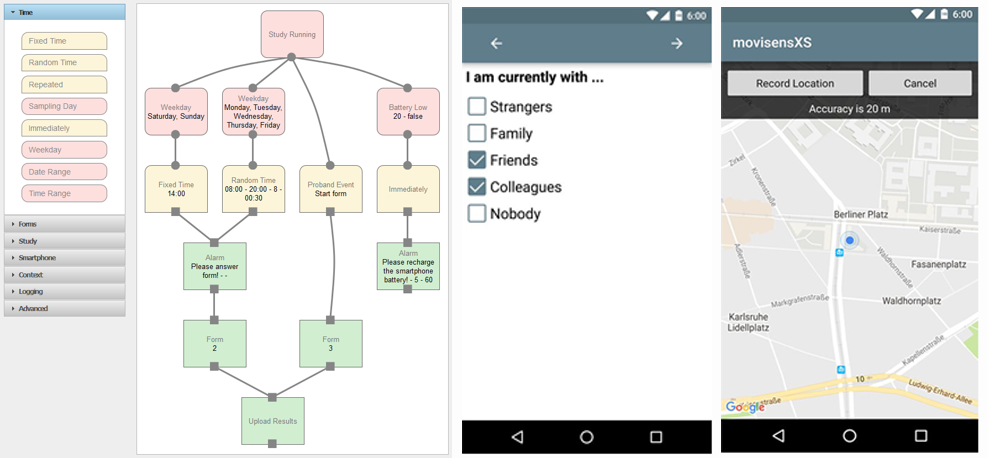
Figure 11.3: Movisens Sample scheme editor (left) and App Screenshots (right)
11.1.4 PsyMate
The PsyMate app (http://www.psymate.eu) was developed by the Department of Psychiatry and Psychology at Maastricht University in the Netherlands to assess psychological problems in daily life. The app has been validated for use in depression, bipolar disorder, and psychosis, with new scales currently being developed for a range of diseases including Parkinson’s disease, pain, cardiology, hypertension, diabetes and Irritable Bowel Syndrome. It was also used in an EU-funded project to study gene-environment interaction in schizophrenia (http://www.eu-gei.eu/about-the-project/psymate).
The app is free to download for iOS and Android devices on Apple and Google play stores. PsyMate is available in five languages (English, French, German, Dutch, Spanish). More translations are in preparation.
Uses of the app include self-monitoring of mood states, delivering professional support during treatment, or conducting EMA-research. The app can be customized to address specific client needs or research projects, with expertise from the PsyMate development team, which includes an active working group that meets regularly to discuss and advise new projects. Researchers have access to the raw data without having to go through the PsyMate development team. Communication from the PsyMate back office to researchers about updates and assistance with technical problems could be a point for consideration for using this platform.
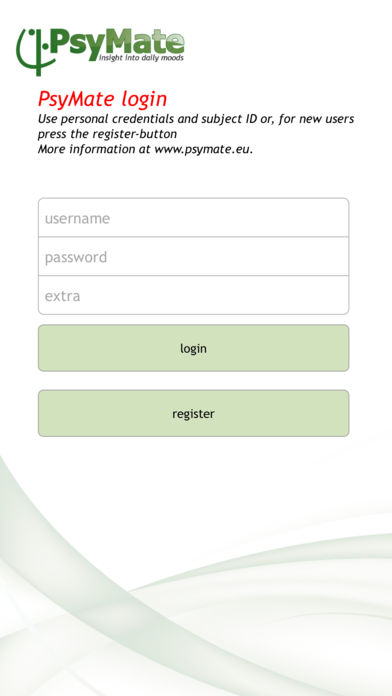
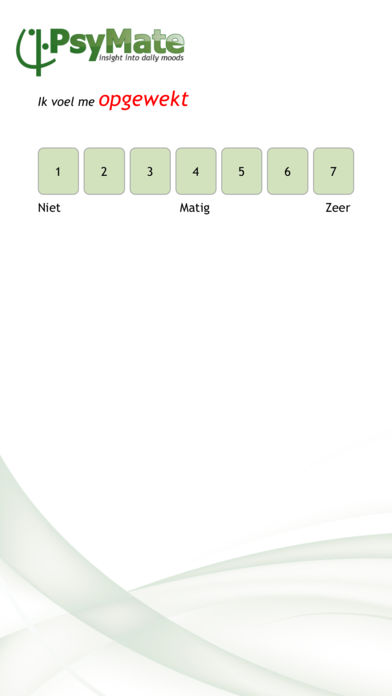
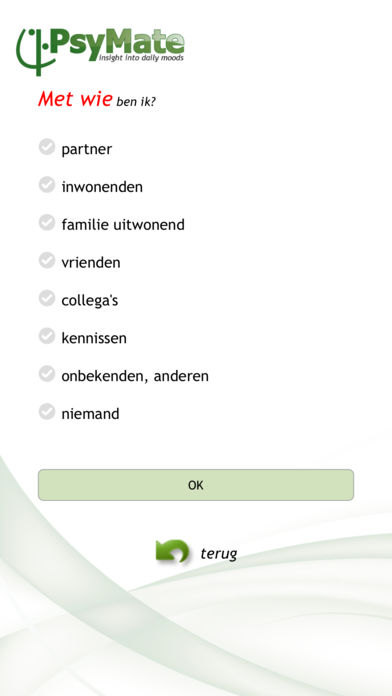
Figure 11.4: PsyMate App Screenshots
11.1.5 RoQua
RoQua (http://www.roqua.nl/) is a web-based Routine Outcome Monitoring system, developed and maintained by a Dutch non-profit development and service organization that is funded by several by northern GGZ organizations and the Department of Psychiatry, University Medical Center Groningen. RoQUA has a sophisticated and user-friendly online back-office portal, with which researchers can define assessment protocols and invite study participants - through e-mail or SMS - to complete questionnaires online (on desktop or mobile devices).
By inviting study participants several times a day to complete a questionnaire via the standard web browser of their mobile phone, active EMA an be implemented. This approach was taken in several large-scale studies, including ‘NESDA’ (http://nesda.nl; see also Chapter 10) and “HowNutsAreTheDutch” (http://www.hoegekis.nl; Van der Krieke et al., 2017, 2016). At present, RoQua does not support the collection of passive EMA data. However, preliminary results have been reported with a system called ‘Physiqual’ (Blaauw et al., 2016), with which active EMA data, collected with RoQUA, can be combined with wearable sensor data.
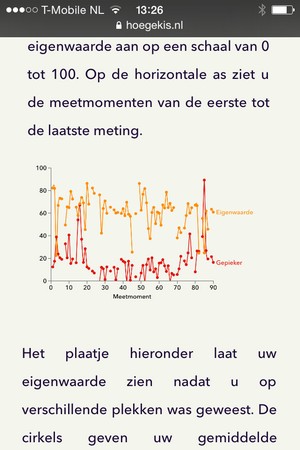
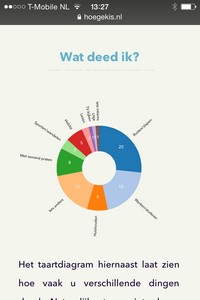
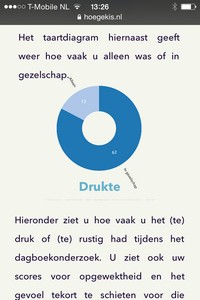
Figure 11.5: Screenshots of the participant feedback web-page of the ‘HowNutsAreTheDutch’ project, in which data is collected by the RoQua system
11.2 Wearables
11.2.1 GENEActiv
GENEActiv, sold by UK-based company Activinsights (http://activinsights.com), is a waterproof wrist-worn device with a high-precision, configurable 3-axial accelerometer (range: +/- 8g), an ambient light sensor, a (near-body) temperature sensor, and an event logger (a button that users can press to mark a targeted event). GENEActiv was developed to accurately assess human activity in scientific studies. The device has a storage capacity of 0.5GB of raw data. At 10Hz, the device can log activity up to one month. July 2018, the price for one unit was approximately 250 euro.
GENEActiv is used in a growing number of clinical studies to measure activity and sleep-wake cycles, in natural conditions, over longer periods of time. Dedicated R-packages to pre-process and analyze the raw data exist (see Chapter 12). Matlab users should consider the open source ‘Actant - Activity Analysis Toolbox’ (https://github.com/maximosipov/actant), by Osipov & Te Lindert, which includes functionality for visualization and analysis of behavioral and environmental timeseries, acquired using GENEActiv (and other) accelerometers. No accompanying app exists with which study participants can be provided feedback about their activity. This might negatively affect wear-time and study compliance in research participants, who are accustomed to consumer activity-sampling devices, such as Fitbit, where many options for real-time feedback exist. Further, researchers we spoke with noted that the event logger was hard to use in practice. This resulted in low compliance in field studies.
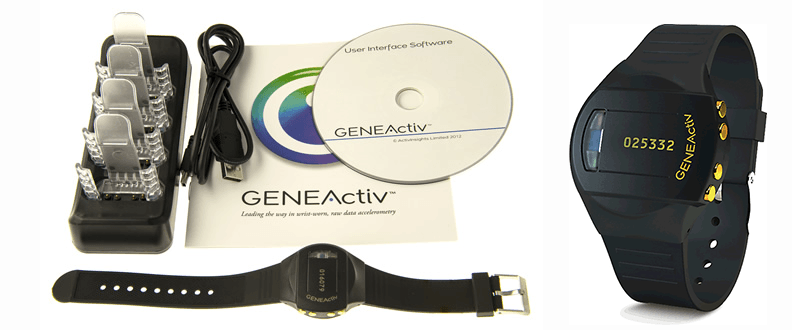
Figure 11.6: The GENEActiv Accelerometer
11.2.2 VU-AMS
The VU University Ambulatory Monitoring System (VU-AMS; http://www.vu-ams.nl/), developed by the department of Biological Psychology and the Technical Department (ITM) of the Faculty of Behavioral and Movement Sciences, allows ambulatory recording of autonomic and cardiovascular activity. VU-AMS measures heart rate, heart rate variability, Respiratory Sinus Arrhythmia, Pre-Ejection Period, Left Ventricular Ejection Time, Respiration Rate, Stroke Volume (SV) and Cardiac Output, Skin Conductance Level (SCL) and Skin Conductance Responses (SCRs) and Tri-Axial Accelerometry (of Body Movement). For the processing of VU-AMS data, a dedicated software suite called the ‘Data Analysis and Management Software’ (VU-DAMS) is available (for Windows and Mac). VU-AMS is used worldwide by many research groups, to study stress and emotion in both laboratory and naturalistic settings (De Geus & Van Doornen, 1996; De Geus et al., 1995; Willemsen et al., 1996).
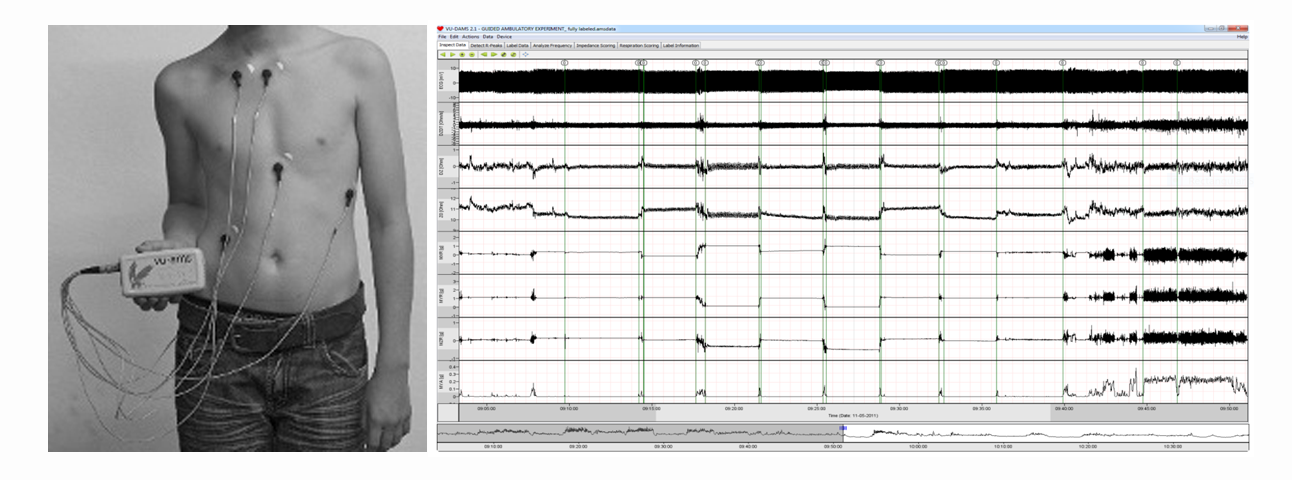
Figure 11.7: VU-AMS device (left) and VU-DAMS screenshot (right)
References
Warmerdam, L., Riper, H., Klein, M. C., Van de Ven, P., Rocha, A., Henriques, M. R., … Cuijpers, P. (2012). Innovative ict solutions to improve treatment outcomes for depression: The ICT4Depression project. Annual Review of Cybertherapy and Telemedicine, 181(1), 339–343. https://doi.org/10.3233/978-1-61499-121-2-339
Kleiboer, A., Smit, J., Bosmans, J., Ruwaard, J., Andersson, G., Topooco, N., … Riper, H. (2016). European COMPARative Effectiveness research on blended Depression treatment versus treatment-as-usual (E-COMPARED): Study protocol for a randomized controlled, non-inferiority trial in eight European countries. Trials, 17(1). https://doi.org/10.1186/s13063-016-1511-1
Van de Ven, P., O’Brien, H., Henriques, R., Klein, M., Msetfi, R., Nelson, J., … Riper, H. (2017). ULTEMAT: A mobile framework for smart ecological momentary assessments and interventions. Internet Interventions, 9, 74–81. https://doi.org/10.1016/j.invent.2017.07.001
Mikus, A., Hoogendoorn, M., Rocha, A., Gama, J., Ruwaard, J., & Riper, H. (2018). Predicting short term mood developments among depressed patients using adherence and ecological momentary assessment data. Internet Interventions, 12, 105–110. https://doi.org/10.1016/j.invent.2017.10.001
Rocha, A., Camacho, R., Ruwaard, J., & Riper, H. (2018). Using multi-relational data mining to discriminate blended therapy efficiency on patients based on log data. Internet Interventions, 12, 176–180. https://doi.org/10.1016/j.invent.2018.03.003
Van Ballegooijen, W., Ruwaard, J., Karyotaki, E., Ebert, D. D., Smit, J. H., & Riper, H. (2016). Reactivity to smartphone-based ecological momentary assessment of depressive symptoms (MoodMonitor): Protocol of a randomised controlled trial. BMC Psychiatry, 16(1), 359. https://doi.org/10.1186/s12888-016-1065-5
Van der Krieke, L., Blaauw, F. J., Emerencia, A. C., Schenk, H. M., Slaets, J. P., Bos, E. H., … Jeronimus, B. F. (2017). Temporal dynamics of health and well-being: A crowdsourcing approach to momentary assessments and automated generation of personalized feedback. Psychosomatic Medicine. https://doi.org/10.1097/PSY.0000000000000378
Van der Krieke, L., Jeronimus, B. F., Blaauw, F. J., Wanders, R. B., Emerencia, A. C., Schenk, H. M., … De Jonge, P. (2016). HowNutsAreTheDutch (HoeGekIsNL): A crowdsourcing study of mental symptoms and strengths. International Journal of Methods in Psychiatric Research. https://doi.org/10.1002/mpr.1495
Blaauw, F. J., Schenk, H. M., Jeronimus, B. F., Van der Krieke, L., De Jonge, P., Aiello, M., & Emerencia, A. C. (2016). Let’s get Physiqual – An intuitive and generic method to combine sensor technology with ecological momentary assessments. Journal of Biomedical Informatics. https://doi.org/10.1016/j.jbi.2016.08.001
De Geus, E., & Van Doornen, L. (1996). Ambulatory assessment of parasympathetic/sympathetic balance by impedance cardiography. In Ambulatory assessment. computer assisted psychological and psychophysiological methods in monitoring and field studies (pp. 141–164). Hogrefe & Huber.
De Geus, E., Willemsen, G. H., Klaver, C. H., & Van Doornen, L. J. (1995). Ambulatory measurement of respiratory sinus arrhythmia and respiration rate. Biological Psychology. https://doi.org/10.1016/0301-0511(95)05137-6
Willemsen, G. H., De Geus, E., Klaver, C. H., Van Doornen, L. J., & Carroll, D. (1996). Ambulatory monitoring of the impedance cardiogram. Psychophysiology. https://doi.org/10.1111/j.1469-8986.1996.tb02122.x